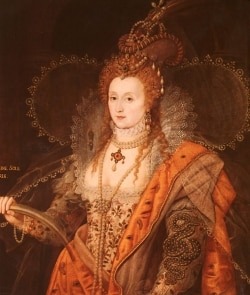
Hatfield House
David Dimbleby’s first stop, in considering Elizabeth I’s reign, was Hatfield House, the house where Elizabeth grew up and the place where you can see the famous “Rainbow Portrait”. Dimbleby pointed out that Henry VIII had ruled by brute force but that Elizabeth was more subtle and that she presented herself as the Virgin Queen, which was just as powerful image as the majestic image that Henry created for himself. Elizabeth believed that she could exert power just as well through seduction as through fear.
In the Rainbow Portrait, Elizabeth has her face immaculately made-up, her outfit is encrusted with beautiful jewels and she is holding a rainbow in her hand. The rainbow is a symbol of peace and the words on the portrait, “non sine sole iris”, mean “no rainbow without the sun” or we can read them as “no peace without Elizabeth”. Other symbolism in the portrait includes:-
- The Pearls – These symbolise purity
- The snake on the sleeve with its head above a heart shaped pendant – The snake symbolises wisdom and so this is thought to mean that Elizabeth’s heart is controlled by wisdom.
- Ears and eyes – Elizabeth’s golden robe is decorated with ears and eyes which could mean that Elizabeth, as Queen, has eyes and ears everywhere, that she is a woman with far-reaching power.
Nicholas Hilliard
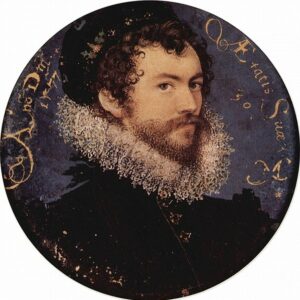
At the Victoria and Albert Museum, David Dimbleby took a look at some miniatures painted by Nicholas Hilliard, including Hilliard’s self-portrait, Sir Walter Raleigh and “Young Man Among the Roses”. He also viewed the beautiful Drake Jewel – a beautiful piece of jewellery consisting of a cameo of an African man with a European woman behind, sumptuous rubies and diamonds, and a locket containing a miniature of Elizabeth herself with a phoenix below.
Voyages of Exploration
Dimbleby spoke of how the devotion which Elizabeth inspired in her courtiers led to them undertaking voyages of discovery to the four corners of the Earth. Dimbleby visited the River Dart in Devon, a river from which ” a new breed of Englishmen emerged”, men who crossed the ocean to America for excitement, glory and to please their Queen. He explained how the artist John White sailed with Sir Walter Raleigh to Virginia, the new settlement in America named after the Virgin Queen, to paint the exotic animals found on their travels and to paint the native Americans so that Elizabeth could see first-hand what she had conquered.
The most daring voyage undertaken during the reign of Elizabeth I was Sir Francs Drake’s circumnavigation of the Earth in 1577. Dimbleby visited Middle Temple Library in London to view the two globes made by Emery Molyneux who sailed with Drake. His celestial globe showed the various constellations, including the Southern Cross, and his terrestrial globe showed the world, as the Tudors knew it, with Drake’s journey clearly marked. Elizabeth’s coat of arms is marked slap bang in the middle of America showing that the New World was hers for the taking.
The Cheapside Hoard
At the Museum of London, David Dimbleby was able to view the Cheapside Hoard, the largest hoard of 16th century jewellery in the world. It was discovered in Cheapside in 1912 under the cellar of a house and this collection of breathtaking jewellery is worth millions. It is evidence of Elizabeth’s “reach” because there are jewels from India, Columbia and other far-off countries.
The Armada Portrait
Another portrait of Elizabeth with strong symbolism. In this portrait, a jewel encrusted Elizabeth I has her hand resting on a globe, with her fingers extended over the Americas, and then over her right shoulder we see the Spanish fleet, the Armada, gathering, and then over her left shoulder we see the same fleet floundering on the stormy seas. This portrait is described by Dimbleby as a “rousing patriotic image” which aimed to inspire the nation.
Shakespeare the Mythmaker
Dimbleby spoke of the myths that surround the defeat of the Spanish Armada – that Drake was playing bowls when the Armada was sighted, but insisted on completing the game, and that the English were God’s chosen people and that God was behind England – and then went on to talk about William Shakespeare, the greatest “mythmaker”.
William Shakespeare was an Elizabethan playwright who wrote plays spanning 350 years of British history, describing the grandeur of history. He wrote of Richard III as an evil hunchback who cried out “A horse! A horse! My kingdom for a horse!” as he is unhorsed at the Battle of Bosworth, and Henry V’s famous defeat of the French. Shakespeare’s British history plays came to a triumphant end with the birth of his monarch, Elizabeth I, and through his history plays Shakespeare was saying that a new era of peace and prosperity had been heralded in by the Tudors, a time of peace and prosperity. Shakespeare’s view of England was the Tudor view of England, as Shakespeare says in his play Richard II:-
“This royal throne of kings, this sceptred isle,
This earth of majesty, this seat of Mars,
This other Eden, demi-paradise,
This fortress built by Nature for herself
Against infection and the hand of war,
This happy breed of men, this little world,
This precious stone set in the silver sea,
Which serves it in the office of a wall
Or as a moat defensive to a house,
Against the envy of less happier lands,
This blessed plot, this earth, this realm, this England.”
Elizabeth’s reign is known as a Golden Age and she did indeed build on her father’s vision to make England a strong and prosperous nation.
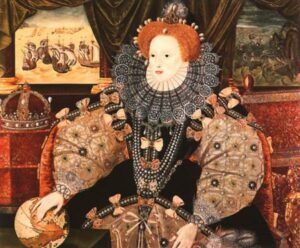
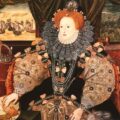
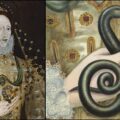
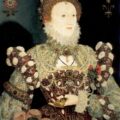
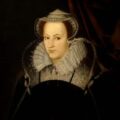
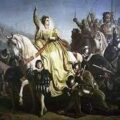
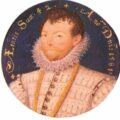
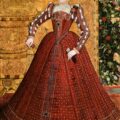
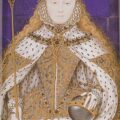
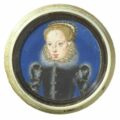
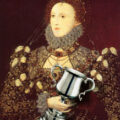
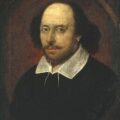
I must admit, I thought this looked like it would be abit boring but it was reall interesting! I wish I had watched it from the beginning now! The thing that struck me the most was just how intelligent all these people were